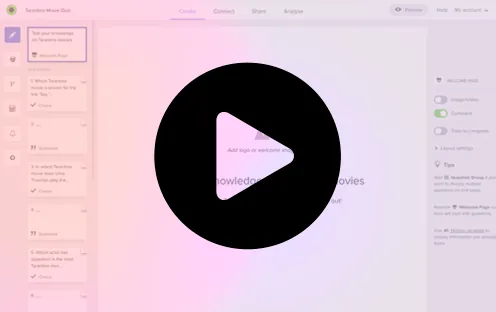
Surveys are a powerful tool for gathering valuable information and insights, but their effectiveness hinges on your participants’ engagement. The survey introduction is crucial in setting the tone for the entire experience. A well-crafted introduction encourages respondents to participate and establishes transparency and trust. In this guide, we’ll explore the key elements of writing a good survey introduction that captivates your audience and maximizes the quality of your data.
How to title the survey?
Surveys often have a title that reads “Customer satisfaction survey”. This makes sense for the person creating the survey. Unfortunately, the user doesn’t see it that way anymore. The title of the survey must be engaging for the person completing it. “Share your opinion”, and “Help us improve the product you use.” Such a title says much more to the respondent, it informs about the type and what the survey is intended for. Additionally, we appreciate the customer’s opinion.
What to include in survey introduction
- Clarity is key: The survey introduction is the first point of contact between you and your participants. It should be clear, concise, and easy to understand. Clearly outline the purpose of the survey, making sure participants know why their input is valuable and how it will be used. Ambiguity can lead to confusion and, ultimately, affect the quality of the responses.
- Establish trust and confidentiality: Participants are more likely to provide honest and accurate responses when they trust the survey process. Assure them of the confidentiality of their responses and explain how their data will be used. Clearly communicate any privacy measures you have in place, such as anonymous response collection, to build trust and encourage open participation.
- Highlight the importance: Convey the significance of the survey by emphasizing its relevance to the participants. Clearly articulate how their responses will contribute to meaningful insights, inform decision-making, or drive positive change. When participants understand the impact of their input, they are more likely to engage thoughtfully.
- Set expectations: Let participants know what to expect regarding the time commitment and the nature of the questions. If the survey is brief, mention it. If it covers specific topics, provide a brief overview. Setting clear expectations helps participants allocate the necessary time and mental energy to complete the survey accurately.
- Personalize and engage: Make the introduction more personable by addressing participants directly. Use inclusive language to create a connection. Consider incorporating a brief thank-you message to express appreciation for their time and participation. Personal touches can enhance engagement and foster a positive survey experience.
- Pilot test your introduction: Before launching the survey, conduct a pilot test with a small group to gather feedback on the introduction. Pay attention to participants’ comprehension, and make adjustments based on their suggestions. This iterative process can help you fine-tune the introduction for maximum clarity and effectiveness.
- Provide contact information: Include contact information for any inquiries or concerns. Knowing they can reach out with questions can boost participants’ confidence in the survey process. Responding promptly to queries reinforces your commitment to a transparent and participant-friendly survey experience.
Customer surveys: feedback form introduction
The introduction to a customer experience survey feedback form is a crucial first step in inviting customers to share their insights. It’s a brief yet impactful message expressing gratitude for their time and emphasizing the significance of their feedback in shaping the company’s offerings. This introduction assures customers of the confidentiality of their responses, sets expectations regarding the survey’s length, and may highlight incentives for participation. For instance, a retail company could convey appreciation by offering participants a chance to win a gift card, fostering a positive and engaged response from customers. Overall, the feedback form introduction serves as a friendly invitation for customers to contribute their thoughts and experiences, creating a collaborative feedback loop that benefits both the customer and the business.
An example of a survey introduction
Dear [Customer Name],
Thank you for choosing [Your Company Name]! Your insights are invaluable in helping us improve. Please take a moment to share your thoughts through this brief survey.
Rest assured, your responses are confidential. Complete the survey to win a [Example: $50 Gift Card].
Thank you for shaping [Your Company Name]’s journey.
A well-crafted survey introduction is the cornerstone of a successful data collection process. By prioritizing clarity, trust, and engagement, you can create an introduction that encourages meaningful participation and yields high-quality responses. Remember, the effort invested in designing an effective introduction will pay off in valuable insights and a more successful survey overall.







